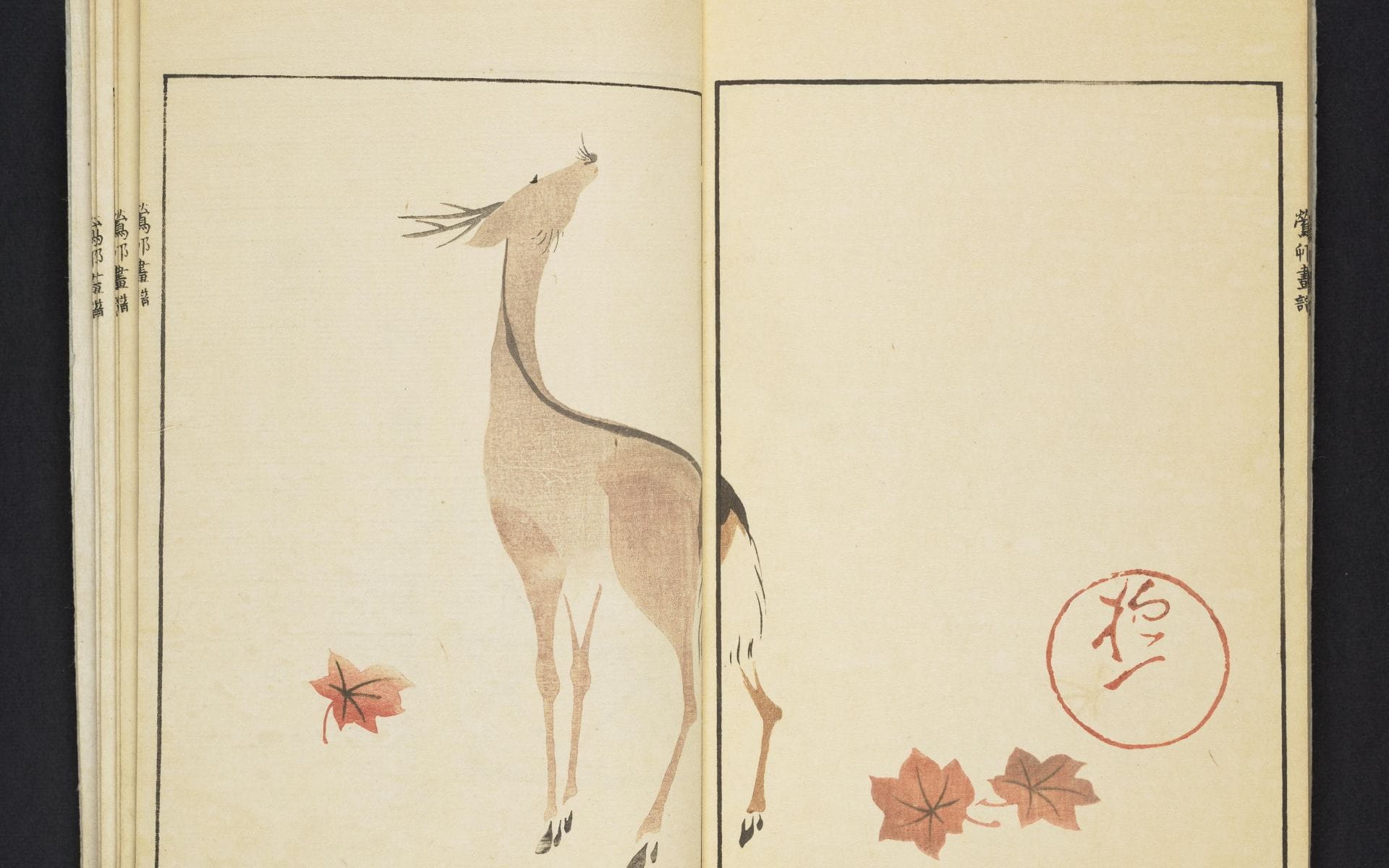
Artist: Sakai Hōitsu 酒井抱一(1761–1828)
Title: Ōson gafu 鶯邨画譜 (Ōson Painting Album)
Alternative Title: Hōitsu jōnin gafu抱一上人画譜, Hōitsu jōnin Ōson gafu抱一上人鶯邨画譜
Date: Second month, 1817
Description: 1 volume
Medium: Woodblock printed; ink and color on paper; paper cover
Dimensions: 19 cm x 28 cm
Publisher: Izumiya Shōjirō 和泉屋庄次郎, Edo
Block Carver: Asakura Hachiemon 朝倉八右衛門
Gift of Mr. Arthur Tress
Object Number: Box 17, Item 3
https://franklin.library.upenn.edu/catalog/FRANKLIN_9977502563603681Z

In Ōson gafu, Sakai Hōitsu (1761–1828) demonstrates his understanding of Ogata Kōrin’s (1658-1716) oeuvre and positions himself as the artistic successor to Kōrin. The blue wave pattern on the cover immediately links this book to Kōrin’s famous wave patterns. Both the subjects and style of the illustrations in this book are done in the manner of Kōrin. The actual-size seals on every illustration and Hōitsu’s artist name, Ōson, in the title likewise claims Hōitsu’s right to use these images and to claim his place in Kōrin’s artistic legacy. In the first preface, scholar and poet Kamo Suetake (1754-1841) further praises Hōitsu as having surpassed the artistic achievement of Kōrin.
The image featured here is an excellent example of Hōitsu’s adoption of Kōrin’s tradition as it is rendered throughout this book. Here, Hōitsu portrays a deer standing with three red maple leaves on the ground. The torso and legs of the deer were printed by separate blocks to show the wet and fluent brush for which Kōrin was known and that Hōitsu seeks to imitate here. The maple leaves were printed as a gradient of colors. Similar images of deer also appear Kōrin gafu illustrated by Nakamura Hōchū, from 1802 (Tress Collection: Box 8, Item 11) and Kōrin hyakuzu by Hōitsu from 1816 (Tress Collection: Box 14, Item 13), which were published prior to this book. The superior printing quality brings the brushstrokes to life, which, echoing the first preface, elevates Hōitsu as a master of Kōrin’s tradition.
The artist Hōitsu was born to the Sakai family, a high-ranking samurai family that governed Himeji Castle in today’s Hyōgo Prefecture. His family was also known for its patronage of the arts, and their status allowed Hōitsu to access works by famous painters in various styles and to practice kyōka and haikai in his youth. In 1797, he became a Buddhist monk, and later he adopted the artist name Hōitsu from the Daoist text, theTao Te Ching. To demonstrate his admiration of Kōrin, who had also served the Sakai family, in 1815 Hōitsu held a ceremony and exhibition to commemorate the centennial of Kōrin’s death. One year later, he published the first edition of Kōrin hyakuzu (One Hundred Pictures of Kōrin), a monochrome catalogue showing works displayed in the centennial exhibition; this also includes the paintings which were owned by the Sakai family and Hōitsu’s close friends. Kōrin hyakuzu and Hōitsu’s own painting album, Ōson gafu, are the landmarks of his artistic career, and signal his embrace of the tradition of Kōrin. He utilized the printed painting album as a means to market himself to a broader audience.
Other copies of this book are in the British Museum, Freer Gallery of Art, and Metropolitan Museum of Art, and Museum of Fine Art in Boston.
Selected Reading
McKelway, Matthew P. 2012. Silver wind: the arts of Sakai Hōitsu (1761-1828). New York: Japan Society.
Hillier, Jack. 1987. The art of the Japanese book. London: Wilson for Sotheby’s Publications. 654-699
Posted by Tim Zhang, Fall semester, 2019

